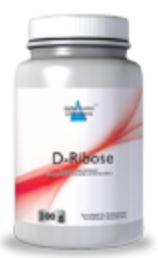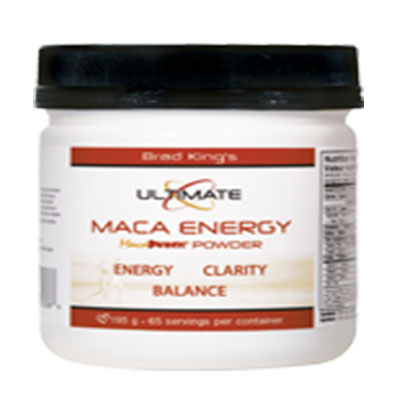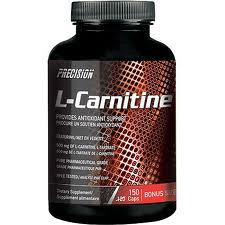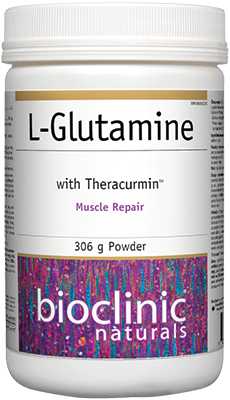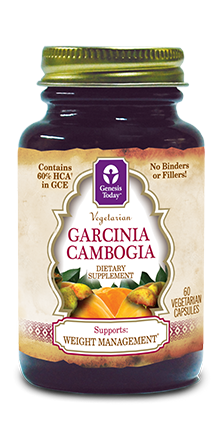15 Supplements for Workout | How to Get the Most Out of your Workout?

How to Get the Most From Your Exercise

While through many studies exercising is proven to be beneficial for our health, unfortunately many people do not get all the benefits or expected results from their exercise and this may discourage them from continuing exercise. Any exercise program requires a proper nutritional support which is shown to substantially improve the outcome.
Exercise impacts our body's metabolism and with correct nutrition we are able to increase this impact contributing to gain better results. Through a process called Catabolism the food is broken down to its small building blocks which is used by the cells to produce energy (ATP). Every activity in our body requires energy, for example energy is used for detoxification, repair, growth, fighting disease, producing enzymes, producing hormones, and many other activities. The process of using energy to produce new compounds and molecules is called Anabolism.
A proper nutrition during exercise should provide energy for the muscle's activities, repair, growth, or maintenance. During exercise our muscles first obtain their energy from their limited reserves of ATP and other molecule called Creatine Phosphate, but this source quickly runs out. Then muscles via aerobic metabolism use Glucose at the presence of oxygen to produce their required ATP. When there is not enough oxygen supply, muscles via anaerobic metabolism use Glucose to produce energy and this process results in production of another compound called Lactic Acid which causes soreness and pain in the muscles. As the Glucose reserves decrease muscles turn to Fat and Protein for their source of energy.
The intensity, type of exercise and the group of muscles involved in an exercise program affect the metabolism and create different results. For instance, anaerobic exercises involving short but intense muscle activates like weight lifting cause muscle growth; while, aerobic exercises involving long term but low level of muscle activities like running, biking, and swimming result in weight loss, better respiration and cardiovascular health. Combination of both methods will help with better muscle mass and weight loss.

One of the common reasons why people stop exercising is feeling of fatigue and long recovery periods. Providing muscles with energy during exercise will reduce fatigue and reduce time of recovery. A group of supplements are proven to effectively be able to support muscle function, repair, strength, and energy.
N Acetyl L Carnitine is the biologically active form of amino acid L Carnitine shown to deliver fat to the mitochondria to produce energy. Because of its essential role in transporting fat to mitochondria to produce energy, Carnitine is an effective fat burning supplement. Studies on L Carnitine L Tartrate reveal that it substantially increases burning glucose and fat in muscles and promotes better output when taken over 24 weeks with moderate exercise. Also, studies show that L Carnitine improves muscle recovery and reduces the muscle stress markers. Researches also suggest that L Carnitine improves the vascular function, and could be used to prevent risk of heart disease. L Carnitine is available in different forms, the studies for its benefits on fat metabolism, muscles, recovery, and vascular health are done mainly on the L CarnitineL Tartrate form; while, studies on its benefits for brain used N Acethyl L Carnitine.
Carnosine is made up of two amino acids including beta-alaniane and histidine produced by our cells. It is more found in Muscles, Brain, and Heart. Carnosine in muscles prevents fatigue, and offsets the effects of lactic acid. Carnosine level of muscles increases during exercise. During exercise muscle cells use beta-alanine to produce Carnosine, however their ability to do so and the availability of beta-alanine is limited. Based on studies Carnosine helps to neutralize the high amount of free radicals produced during exercise, and it balances the PH of the muscles. Human trial showed improvement in the muscle power in sprinting concluding that the Carnosine's amount in the muscles could result in the better performance. In the brain it plays a protective role against toxins, and it the Heart it helps in regulating the heart beats. Research on human tissue also suggest Carnosine could provide anti aging benefits as well.
Mitochondria as energy factories of our cells require sufficient amount of Coenzyme Q10 to produce energy. Mitochondria are damaged by the free radicals and unable to produce CoQ10, causing aging and age related diseases. Those tissues that require higher energy also have more number of mitochondria and that means they need more Co Enzyme Q10. Other than participating in energy production, Co Enzyme Q10 acts as an antioxidant and by neutralizing free radicals it reduces their damaging effects on the cells.
 Protein Supplements are
commonly used providing spectrum of benefits.
High quality of lean Whey Protein
is easily absorbed quickly providing the muscles with amino acids they need to
repair and recover. Among the plant proteins,
pea protein provides higher
amounts of Glutamine, Arginine,and
Branched Chained Amino Acids. According to a human study from Pennington
Biomedical Research Center, calories derived from protein is more stored as
muscle tissue, while the other sources of calorie such as fat and carbohydrate
are stored as fat. This study suggests that protein may have an impact on the body's
fat percentage. And higher muscle mass translates to increase in metabolism.
Protein Supplements are
commonly used providing spectrum of benefits.
High quality of lean Whey Protein
is easily absorbed quickly providing the muscles with amino acids they need to
repair and recover. Among the plant proteins,
pea protein provides higher
amounts of Glutamine, Arginine,and
Branched Chained Amino Acids. According to a human study from Pennington
Biomedical Research Center, calories derived from protein is more stored as
muscle tissue, while the other sources of calorie such as fat and carbohydrate
are stored as fat. This study suggests that protein may have an impact on the body's
fat percentage. And higher muscle mass translates to increase in metabolism.
Amino acids are the building blocks of proteins. Our body is unable to make Essential Amino Acids ; therefore, they must be sourced from food and supplements. Research shows Essential Amino Acids Valine, Leucine, and Iso Leucine which are known as Branched Chain Amino Acids are particularly important to prevent muscle tissue from being used for energy production, and to improve muscle performance.
Among the amino acids, L Glutamine is comparably found in higher levels in the body; however, it depletes quickly during exercise, after surgeries, and during sickness such as infections. Studies have shown those athletes with lower levels of glutamine are more exposed to respiratory infections, and Glutamine supplementation reduced their respiratory infections rates. Glutamine also found to prevent muscle damage , and loss of muscles as source of energy; therefore, it helps with maintaining the muscle mass and promotes recovery.
Amino Acid L Argenine is an essential amino acid rich in nitrogen group. It is important in wound healing, immune function, cell division, growth hormone production, and it is precursor to Nitric Oxide (NO). L Argenine dilates the blood vessels promoting better blood supply to the muscles and reduces the heart over load. Studies show that oral supplementation with L argenine increased the Growth Hormone production specially when combined with exercise.
Researchers suggest supplementing with D ribose will help to keep the energy (ATP) levels high and reduce recovery time. This is very helpful during exercises like long distance running, swimming and biking when muscles require sustained amount of energy to perform. Ribose is used to improve performance during exercise by supplying energy, it reduces cramp and pain from exercise. It is also helps to improve symptoms related to Chronic fatigue, Fibromyalgia, and coronary heart disease.
Amino acid Creatine, according to many studies participates in production of ATP by providing Phosphate Group, therefore the muscles get less tired, and less Lactic Acid is produced. It has shown to be effective in increasing lean muscle mass and strength. Research suggest that Creatine is mostly effective in high density exercises, such as weight lifting or those sports which require high amount of energy in short period of time; while, there is less evidence to support its benefits for aerobic type of exercise.Creatine is an osmotically active molecule and drives water in to the muscles, so at first the weight gain is due to the water retention, then later due to its effects on muscular strength and providing better energy, it helps to carry more weights and that will build muscle mass. Metabolite of the Creatine is Creatinine which has to be eliminated via kidneys regardless of the Creatines' types on the market.
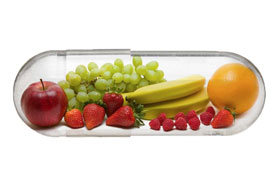
Usually recommended Multivitamins for active lifestyle are designed to provide assistance filling the nutritional gap necessary to maintain energy, repair, and prevent deficiencies. Some of the active multivitamins contain more antioxidants and energy enhancing compounds; however, they are still only one of the basic parts of a healthier and active lifestyle and certainly should not be considered as a replacement for other nutritional requirements and a healthy balanced diet.
Articles and products featured by Health Palace are collected from a variety of sources and are provided as a service by Health Palace. These newsletters, while of potential interest to readers, do not necessarily represent the opinions nor constitute the advice of Health Palace. Presented materials are only for information purposes and do not intent to treat, cure, or prevent any disease.
References:
1.Wutzke KD, Lorenz H. The effect of l-carnitine on fat oxidation, protein turnover, and body composition in slightly overweight subjects. Metabolism. 2004 Aug;53(8):1002-6.
2.Müller DM, Seim H, Kiess W, Löster H, Richter T. Effects of oral L-carnitine supplementation on in vivo long-chain fatty acid oxidation in healthy adults. Metabolism. 2002 Nov;51(11):1389-91.
3.Volek, J. S., Kraemer, W. J., Rubin, M. R., Gomez, A. L., Ratamess, N. A. & Gaynor, P. L-Carnitine L-tartrate supplementation favorably affects markers of recovery from exercise stress. Am J Physiol Endocrinol Metab. (2002); 282:E474-482.
4.Barker GA, Green S, et al. Effect of propionyl-L-carnitine on exercise performance in peripheral arterial disease. Med Sci Sports Exerc. 2001 Sep;33(9):1415–22.
5.Hill CA, Harris RC, Kim HJ, Harris BD, Sale C, Boobis LH, Kim CK, Wise JA. Influence of beta-alanine supplementation on skeletal muscle carnosine concentrations and high intensity cycling capacity. Amino Acids. 2007 Feb;32(2):225-33.
6.Hipkiss AR, Brownson C, Carrier MJ. “Carnosine, the anti-ageing, anti-oxidant dipeptide, may react with protein carbonyl groups.” Mech Ageing Dev. 2001 Sep 15; 122(13): 1431-45.
7.Suzuki Y, Ito O, Mukai N, Takahashi H, Takamatsu K. High level of skeletal muscle carnosine contributes to the latter half of exercise performance during 30-s maximal cycle ergometer sprinting. Jpn J Physiol. 2002 Apr;52(2):199-205.
8.Hill CA, Harris RC, Kim HJ, Harris BD, Sale C, Boobis LH, Kim CK, Wise JA. Influence of beta-alanine supplementation on skeletal muscle carnosine concentrations and high intensity cycling capacity.Amino Acids. 2007 Feb;32(2):225-33.
9.Boldyrev AA, Stvolinsky SL, et al. Biochemical and physiological evidence that carnosine is an endogenous neuroprotector against free radicals. Cell Mol Neuro. 1997;17(2):259–71.
10.Lönnrot K, Metsä-Ketelä T, Alho H. The role of coenzyme Q-10 in aging: a follow-up study on life-long oral supplementation Q-10 in rats. Gerontology. 1995;41 Suppl 2:109-20.
11.Ohtani M, Sugita M, et al. Amino acid mixture improves training efficiency in athletes. J Nutr. 2006
Feb;136(2):538S-543S.
12.Shimomura Y, Yamamoto Y, et al. Nutraceutical effects of branched-chain amino acids on skeletal muscle. J Nutr. 2006 Feb;136(2):529S-532S.
13.Castell LM, et al. Does glutamine have a role in reducing infections in athletes? Eur J Appl Physiol Occup Physiol. 1996;73(5):488–90.
14.Tapiero H, Mathé G, Couvreur P, Tew KD (November 2002). "L-Arginine". (review). Biomedicine & Pharmacotherapy 56 (9): 439–445. doi:10.1016/s0753-3322(02)00284-6.
15.Stechmiller JK, Childress B, Cowan L (Feb 2005). "Arginine supplementation and wound healing". (review). Nutrition in Clinical Practice 20 (1): 52–61. doi:10.1177/011542650502000152. PMID16207646.
16.Witte MB, Barbul A (2003). "Arginine physiology and its implication for wound healing". (review). Wound Repair and Regeneration 11 (6): 419–23. doi:10.1046/j.1524-475X.2003.11605.x. PMID14617280.
17.Gokce N (Oct 2004). "L-arginine and hypertension" . (review). The Journal of Nutrition 134 (10 Suppl): 2807S–2811S; discussion 2818S–2819S. PMID15465790.
18.Zhou MS, Kosaka H, Tian RX, et al. L-Arginine improves endothelial function in renal artery of hypertensive Dahl rats. J Hypertens. 2001;19:421-429.
19.Rajapakse NW, De Miguel C, Das S, Mattson DL (Dec 2008). "Exogenous L-arginine ameliorates angiotensin II-induced hypertension and renal damage in rats" . (primary). Hypertension 52 (6): 1084–90. doi:10.1161/HYPERTENSIONAHA.108.114298. PMC2680209. PMID18981330.
20.Dong JY, Qin LQ, Zhang Z, Zhao Y, Wang J, Arigoni F, Zhang W (Dec 2011). "Effect of oral L-arginine supplementation on blood pressure: a meta-analysis of randomized, double-blind, placebo-controlled trials". review. American Heart Journal 162 (6): 959–965. doi:10.1016/j.ahj.2011.09.012. PMID22137067.
21.Alba-Roth J, Müller OA, Schopohl J, von Werder K (Dec 1988). "Arginine stimulates growth hormone secretion by suppressing endogenous somatostatin secretion". The Journal of Clinical Endocrinology and Metabolism 67 (6): 1186–9. doi:10.1210/jcem-67-6-1186. PMID2903866.
22.Forbes SC, Bell GJ, Turner AJ, Hick PE, Bland RD, Clarke TL, Harden LB (Feb 1976). "Rapid infusion of sodium bicarbonate and albumin into high-risk premature infants soon after birth: a controlled, prospective trial". (review). American Journal of Obstetrics and Gynecology 124 (3): 405–11. doi:10.1139/h11-035. PMID21574873.
23.Dodd SL, Johnson CA, Fernholz K, et al. The role of ribose in human skeletal muscle metabolism. Med Hypotheses. 2004;62(5):819-24.
24.MacCarter D, et al D-ribose aids advanced ischemic heart failure patients . Int J Cardiol. (2009)
25.Hellsten Y1, et al AMP deamination and purine exchange in human skeletal muscle during and after intense exercise . J Physiol. (1999)
26.Gebhart B1, Jorgenson JA Benefit of ribose in a patient with fibromyalgia . Pharmacotherapy. (2004)
27.Sawada SG1, et al Evaluation of the anti-ischemic effects of D-ribose during dobutamine stress echocardiography: a pilot study . Cardiovasc Ultrasound. (2009)
28.Pauly DF1, Pepine CJ D-Ribose as a supplement for cardiac energy metabolism . J Cardiovasc Pharmacol Ther. (2000)
29.Hellsten Y, Skadhauge L, Bangsbo J. Effect of ribose supplementation on resynthesis of adenine nucleotides after intense intermittent training in humans. Am J Physiol Regul Integr Comp Physiol. 2004 Jan;286(1):R182-8.
30.Harris, R.C., K. Söderlund, and E. Hultman. Elevation of creatine in resting and exercised muscle of normal subjects by creatine supplementation. Clinical Science. 83:367-374, 1992.
31.Volek, J.S., Kraemer, W.J., Bush, J.A., Boetes, M., Incledon, T., Clark, K.l. and Lynch, J.M. Creatine supplementation enhances muscular performance during high intensity resistance exercise. Journal of the American Dietetic Association 97:765-770, 1997.
32.Rawson ER, Volek JS. The effects of creatine supplementation and resistance training on muscle strength and weightlifting performance. J Strength Cond Res 2003;17:822.
33.Rae C, Digney AL, et al. Oral creatine monohydrate supplementation improves brain performance: A double-blind, placebo-controlled, cross-over trial. Proc R Soc Lond B Biol Sci. 2003 Oct 22;270(1529):2147–50.
34.Steenge, G.R., J. Lambourne, A. Casey, A. MacDonald, and P.L. Greenhaff. Stimulatory effect of insulin on creatine accumulation in human skeletal muscle. American Journal of Physiology. 275:E974-E979, 1998.
35.Gotshalk LA, Volek JS, et al. Creatine supplementation improves muscular performance in older men. Med Sci Sports Exer. 2002;34(3):537–43.
36.Kreider RB. Effects of creatine supplementation on performance and training adaptations. Mol Cell Biochem. 2003 Feb;244(1–2):89–94.
37.Bhattacharyya S, Pal D, Banerjee D, et al. Shilajit dibenzo—pyrones: Mitochondria targeted antioxidants. Pharmacologyonline. 2009b; 2:690-8.
38.Vitartaite A, Vainoras V, et al. The influence of aerobic exercise to cardiovascular functional parameters to 30–40 year old women. Medicina. 2004;40:451–8.
39.Clarkson, P. 1995. Antioxidants and physical performance. Critical Reviews in Food Science and Nutrition, 35 (1&2), 131–41.
Bioclinic Naturals Mito AMP 60 Veg Capsules
|
Alpha Science D-Ribose Powder 300 Grams |
Brad King Ultimate Energy Powder 150 Grams | |||||||
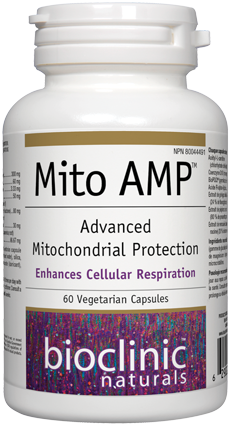 Oxidative damage to the mitochondria is a major factor in cellular aging along with neurological decay. While lifestyle interventions, such as calorie restriction, help improve mitochondrial function in young non-obese adults, certain supplements such as L-carnitine are also of therapeutic benefit. |
D-Ribose quickly restores depleted nucleotide pools, which include ATP, ADP and AMP, and improves overall heart and muscle function. Read more |
Ultimate Maca Energy maca root has many health benefits and scientifically tested properties. In addition to being a source of vitamins, minerals, protein, amino acids and complex carbohydrates, Ultimate Maca Energy also contains an impressive array of bioactive components and antioxidants, which are responsible for its numerous benefits.Read more |
|||||||
|
|
|
|
|
||||||
|
|
|
|
|||||||
| Precision L Carnitine 150 Capsules | Bioclinic Naturals L- Glutamine with Theracurmin 306 Grams Powder | Genesis Garcinia Cambogia 400 mg 60 Veg Capsules |
|
|
|||||
|
...Read more |
L-glutamine supplementation has been shown to prevent an exercise-induced increase in intestinal permeability, by promoting tight junction stability, upregulating anti-inflammatory cytokine production, and suppressing inflammation, notably NF-κB activation. |
Garcinia Cambogia may look like an ordinary pumpkin on the outside, but crack the fruit open and hidden in the rind are the properties that have made this superfruit prized in Southeast Asia for centuries. |
|||||||
|
|
|
Recent Posts
-
Maintain A Healthy Heart Rhythm With Integrative Medicine
Maintain A Healthy Heart Rhythm With Integrative Medicine;Usually, abnormal heart rate or arrhythmi …4th Feb 2021 -
How To Protect Against COVID-19
Coronaviruses are a large group of viruses that cause many common human and animal infections. In hu …30th Jun 2020 -
How to Prevent Gallstones from Forming? | Natural Supplements for Gallstones
How To Prevent Gallstone Formation?Gallstones are hard deposits made of cholesterol or bilirubin f …4th Mar 2020

